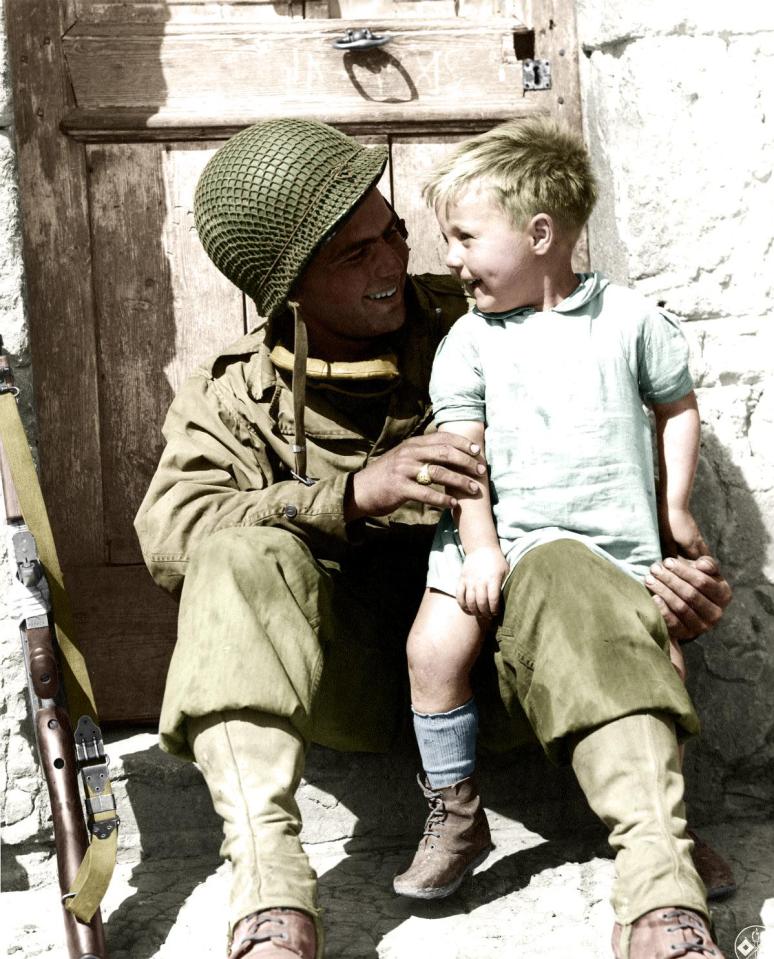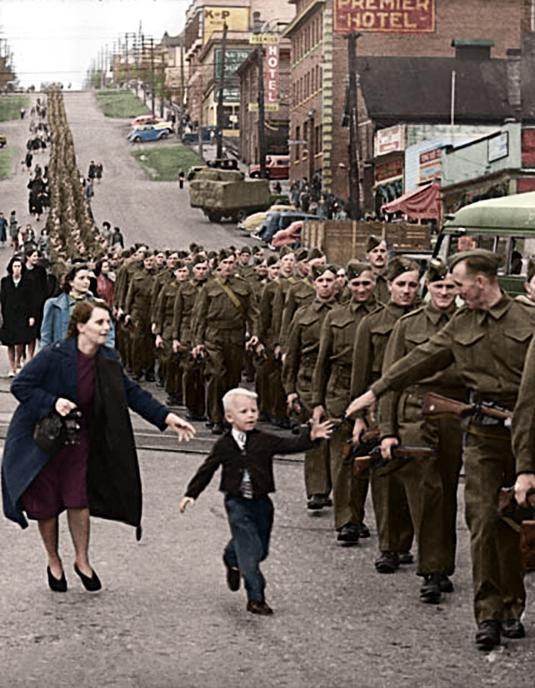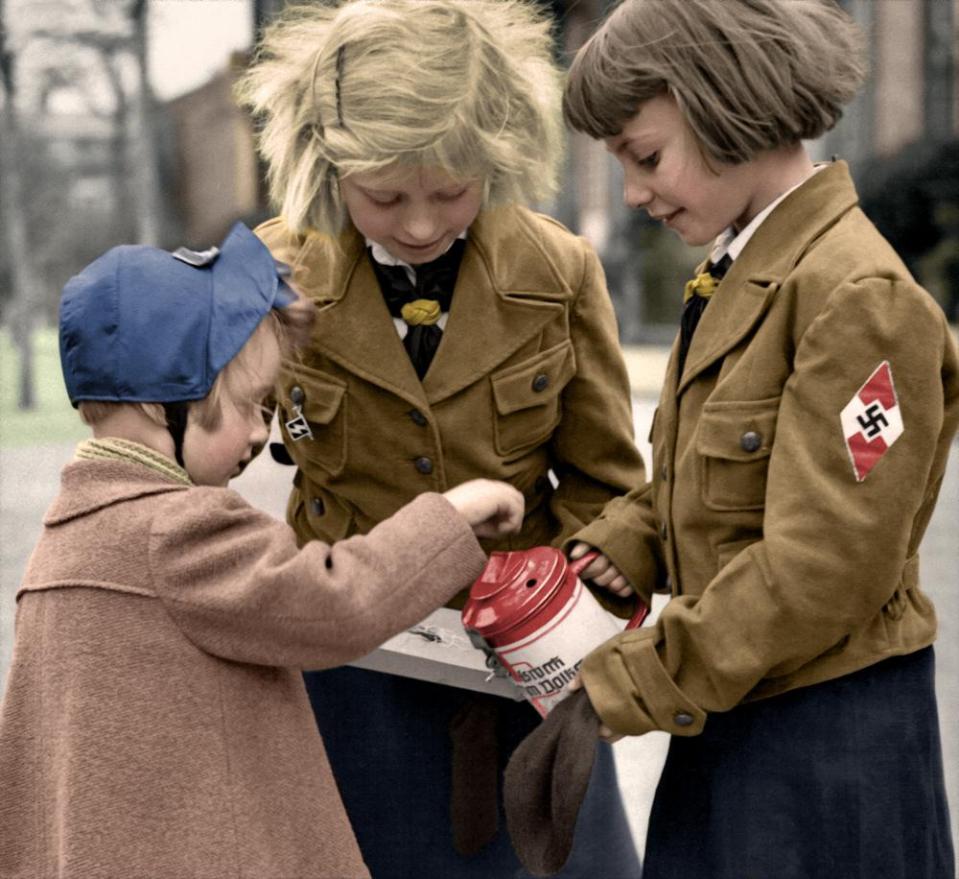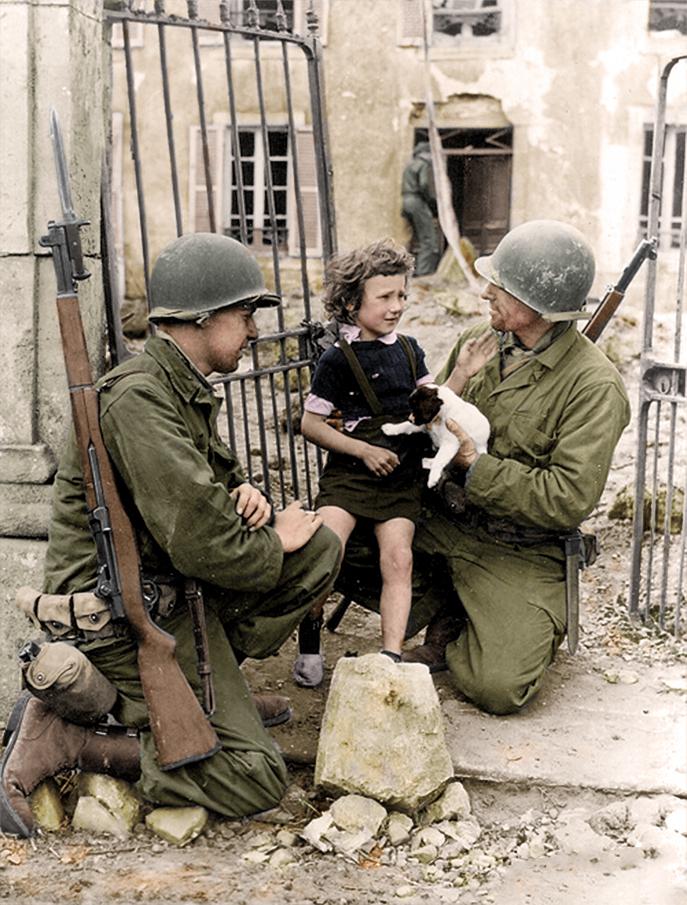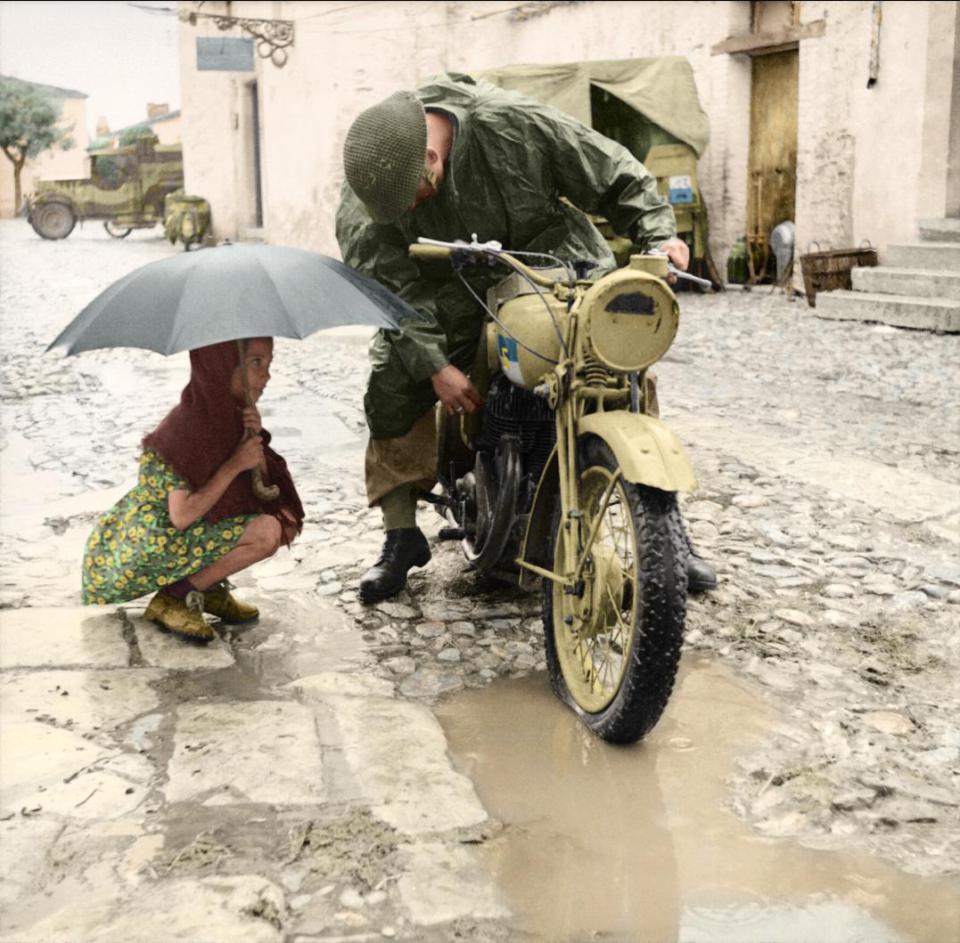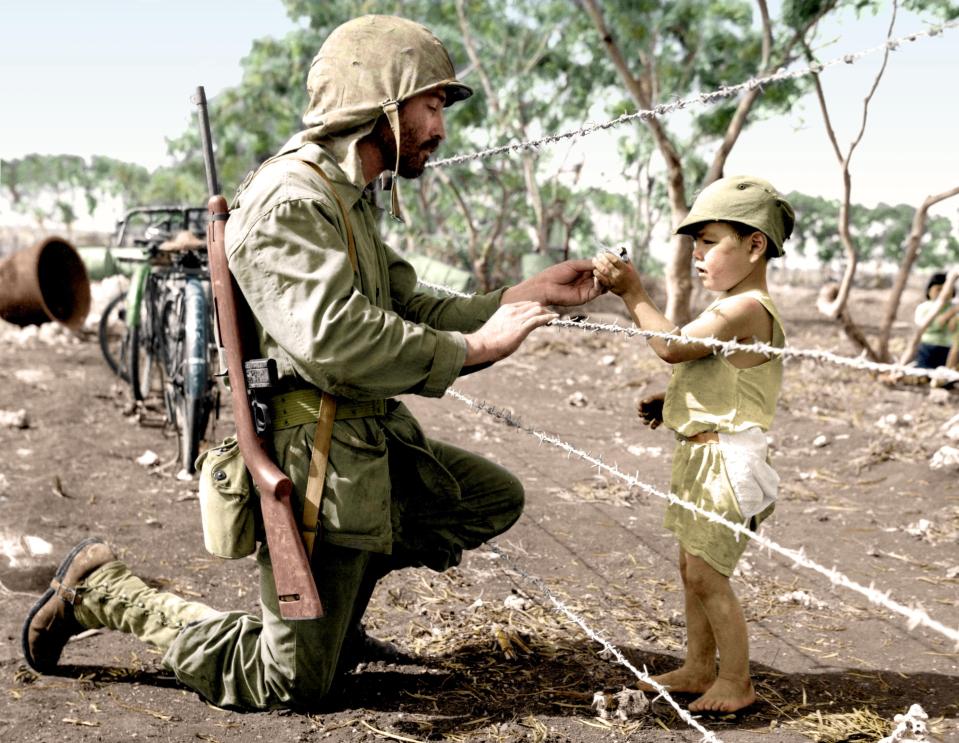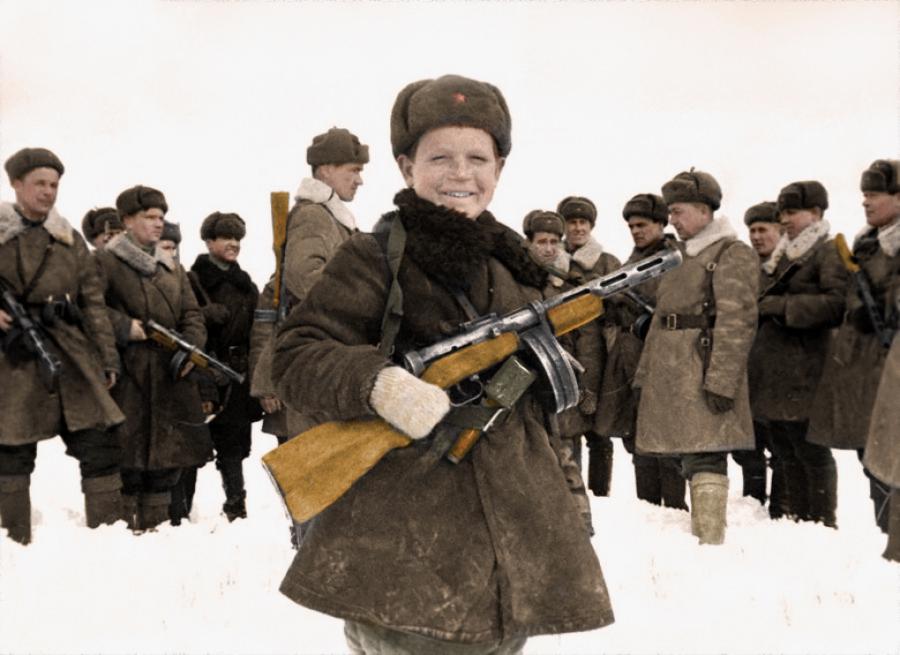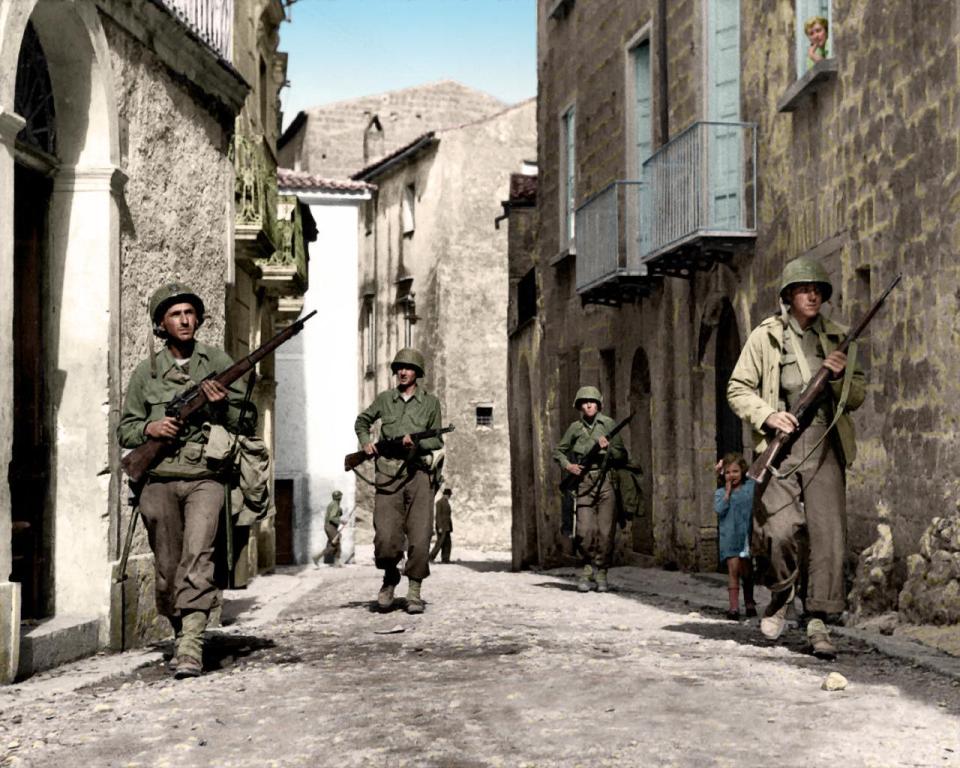Striking colourised images capture the innocence of World War II children who laugh with soldiers and chase their dads as they march off to battle
The photographs depict the startling contrast between youth and conflict

JAW-dropping colourised pictures have captured the innocence of youth in war-stricken scenes.
The vivid images depict children caught up in conflict, from a boy struggling to part with his dad to the young sharing heart-warming moments with soldiers.
The Second World War affected the whole of society, including Britain's kids.
Remarkably, some children even played their own part in the effort, including helping the front line by contributing to the Boy Scouts, Girl Guides and Sea Scouts.
The youth also contributed a crucial money raising effort - which helped both troops in the firing line and families left behind on the home front.
The moving photographs show kids among the rubble, posing with weapons and cracking jokes with the troops.
One of the images depicts the moving moment Warren Bernard struggles to say goodbye to his dad as he marches off with his regiment.
While another heart-breaking photograph shows troops comforting a teary little girl following the Battle of Normandy.
Paul Reynolds, 48, painstakingly colourised the historic black-and-white snaps in the exciting new project.
The design engineer, from Birmingham, said: “I think colourising detailed photos really brings them to life, you notice detail that usually gets missed due to the monotone background.
“I am glad that by colourising these photos more people are aware of the happenings of World War One and World War Two.
“I always get a positive reaction to all photos I post, people are amazed at what can be achieved with even the most damaged of photos.
“I love showing off my photos and it's a real boost to get that positive reaction from people.”
Most Read in Living
Although the process may seem simple, Paul painstakingly uses a digital pen and pad to layer colour onto the snaps by hand, as you would with a painting.
The lengthy process can sometimes be problematic because old photos may be damaged with discolouration or dust spots.
He explained: “I've always been interested in art since a very early age.
“I first started colourising with a family photo of my great Grandmother and progressed from there.
“I basically layer on the colour as you would with a painting, I've painted from an early age so this transition to digital was quite easy for me.”
He added: “The only problems I come across are the condition of the photos, especially private commissions, most are torn, folded, creased, water damaged, dust spots and discoloured which then has to be digitally repaired with a brush.
“This process usually takes longer than the paint, but the finished photo is 100% sharper and more pleasing on the eye.”
Reynolds isn’t the first artist to bring colour to historic black-and-white photos.
Earlier this month, The Sun exclusively unveiled extraordinary colourised photos that brought the D-Day landings to life.
Recently, artist Frederic Duirez brought trench warfare in World War One to life in vivid colour.
And stunning retouched postcards from 1890 captured life in the seaside towns and ruined castles of Scotland in the Victorian age.


